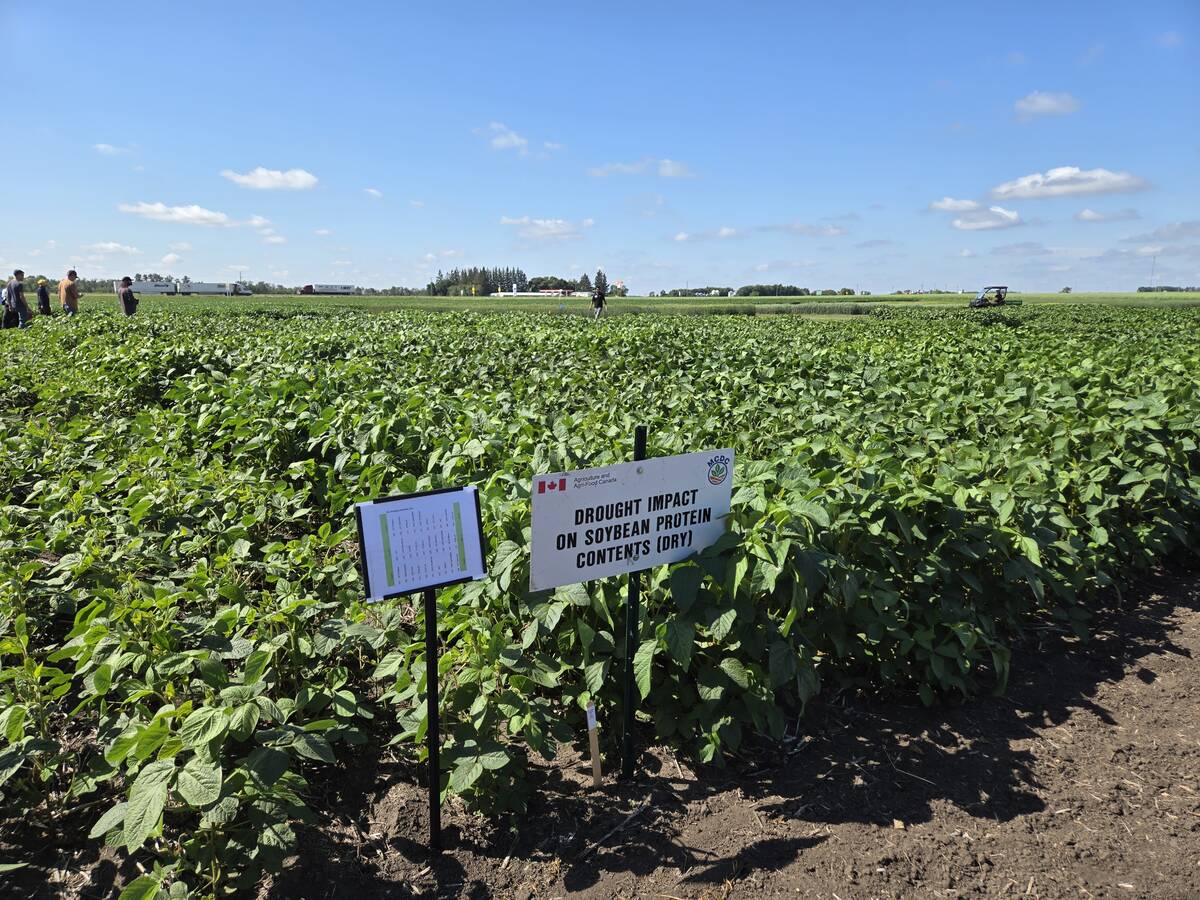By saying what they do and doing what they say, Canadian cattle producers can prove they are protecting the safety and quality of the nation’s beef supply.
The Verified Beef Production program is an extension of Quality Starts Here, an educational program that emphasizes good production practices, recommended operating procedures, environmental guidelines and animal welfare concerns.
Developed a little more than a year ago by the cattle industry using Hazard Analysis Critical Control Point and Good Production Practices manuals, the program sends auditors to cow-calf and feedlot operations to verify that specific practices are being followed.
Read Also

Carberry field day looks for agriculture solutions
Manitoba farmers explored research solutions for resilient crops, perpetual agronomic issues and new kinds of agricultural products at a field day at the Manitoba Crop Diversification Centre in Carberry on Aug. 6.
While the voluntary program has a national agenda, it operates provincially with Saskatchewan, Alberta and Ontario leading the way.
Saskatchewan has 12 trained VBP auditors, members of the cattle industry who must take a five-day on-farm food safety-auditing course based on ISO standards and a two-day course dealing specifically with the beef program.
While the program is voluntary and there are no material bonuses to being successfully audited, provincial administrator and Meacham, Sask., veterinarian Janice Sopatyk said there are benefits to being certified.
“Basically, it’s another marketing tool that they can use. What it does for them is just gives that extra step to say that we follow these specific production practices and we can prove it,” she said.
“Anybody can go to the auction barn and say, ‘I do this with my calves,’ but nobody’s actually verified it. So this goes a step further and says that we have verified this particular program and he indeed is following what he says he is and doing everything in an appropriate manner.”
Sopatyk doesn’t think VBP will play a direct role in opening the U.S. border to Canadian cattle, but she said the program is another tool that demonstrates the country’s quality assurance program for beef cattle and proves to consumers that the industry is making its best effort to produce beef in a safe manner.
As VBP edges closer to receiving technical recognition from the Canadian Food Inspection Agency, Sopatyk said a time may come when processors will require cattle producers to be on the program.
“Part of what’s driving it in this province is we’ve got two small processors in the process of setting up their plants in the province who are going to require their producers to be on the verified beef production and that’s, I think, a large part of what’s going to drive it.”
Six beef operations in Saskatchewan have now been audited and another 75 are enrolled.
To become certified, producers must attend a training course, complete a standard operating procedure and production manual, compile records and ask to be audited.
Brian Weedon was VBP-audited in the spring. The Swift Current area cow-calf backgrounder, who co-chairs the Quality Starts Here committee, said the process was relatively easy.
“We have had a herd health program with our veterinarian for about six years, so the audit and the whole thing was just a rollover and fine-tuning of some things.”
Weedon said building a history through record keeping has benefitted his operation. A running inventory of all pharmaceuticals he purchases eliminates waste and expired product.
“By having a history, you can make some pretty informed management decisions.
“When you have a record of treatment you know what you were treating for and how many incidents you had and sometimes there’s something that comes out of the woodwork. You say, ‘I’ve been doing this when I should have been doing that.’ “
At a recent cattle sale in Medicine Hat, Alta., Weedon presented his yearlings as coming from a verified operation. While he doesn’t think it earned him a premium this time, he is confident his verification will pay dividends down the road and become a prerequisite for branded beef programs. He would like to see 30 percent of the province’s cattle producers on board within five years.
“I have two major objectives. This program is designed to be Mom and Pop friendly. Particularly Mom friendly because Mom seems to be the one that runs the computer,” Weedon said.
“And that it remains voluntary. But I say that with tongue in cheek because as this thing grows, maybe a decade down the road if 80 percent of producers are on Quality Starts Here, processors will eventually make it mandatory.
“It is a bit of an annoyance in the beginning, but once you get there, it’s fine. I think it has many more dividends than it has shortfalls.”














